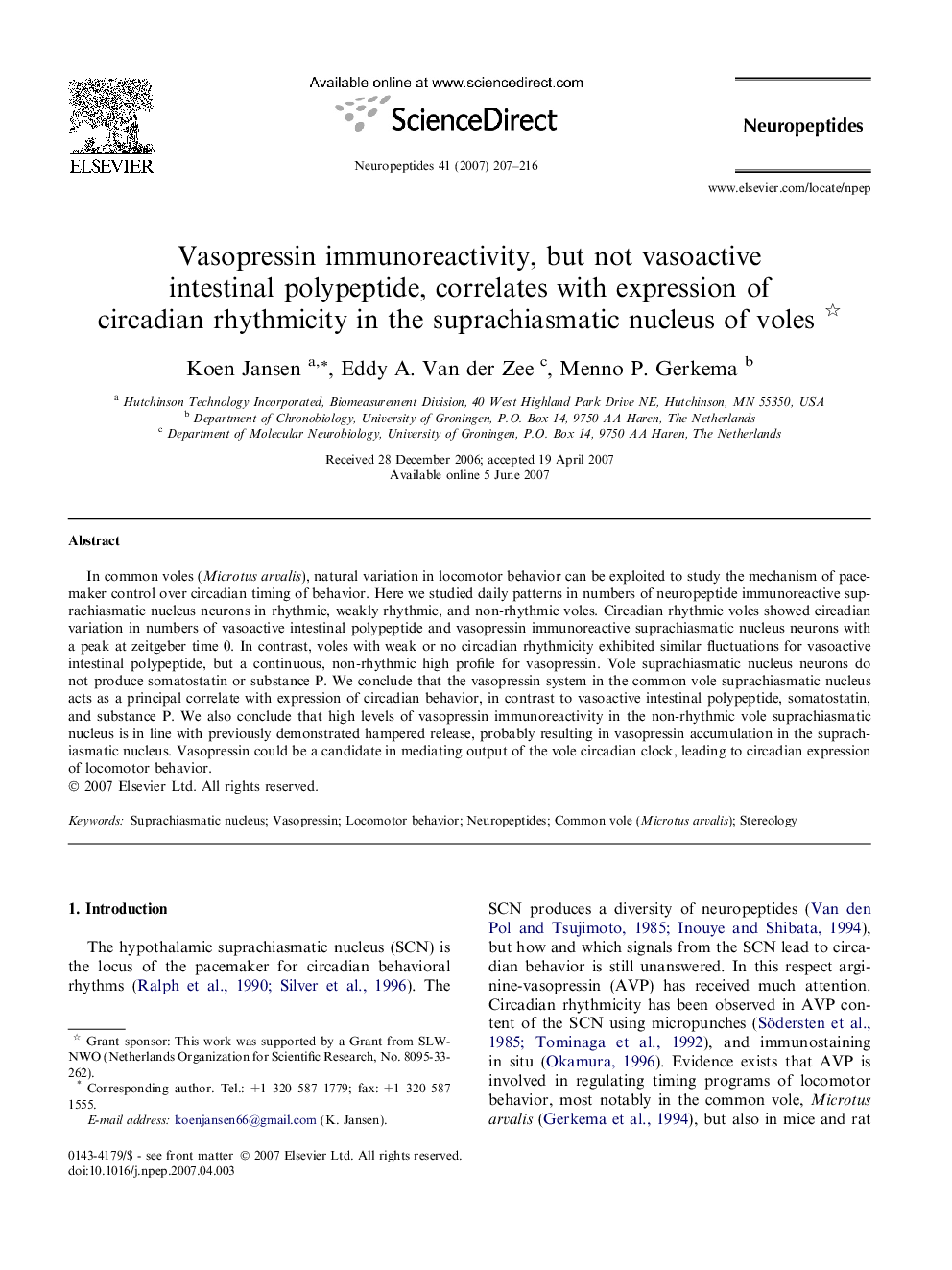| Article ID | Journal | Published Year | Pages | File Type |
|---|---|---|---|---|
| 2808478 | Neuropeptides | 2007 | 10 Pages |
In common voles (Microtus arvalis), natural variation in locomotor behavior can be exploited to study the mechanism of pacemaker control over circadian timing of behavior. Here we studied daily patterns in numbers of neuropeptide immunoreactive suprachiasmatic nucleus neurons in rhythmic, weakly rhythmic, and non-rhythmic voles. Circadian rhythmic voles showed circadian variation in numbers of vasoactive intestinal polypeptide and vasopressin immunoreactive suprachiasmatic nucleus neurons with a peak at zeitgeber time 0. In contrast, voles with weak or no circadian rhythmicity exhibited similar fluctuations for vasoactive intestinal polypeptide, but a continuous, non-rhythmic high profile for vasopressin. Vole suprachiasmatic nucleus neurons do not produce somatostatin or substance P. We conclude that the vasopressin system in the common vole suprachiasmatic nucleus acts as a principal correlate with expression of circadian behavior, in contrast to vasoactive intestinal polypeptide, somatostatin, and substance P. We also conclude that high levels of vasopressin immunoreactivity in the non-rhythmic vole suprachiasmatic nucleus is in line with previously demonstrated hampered release, probably resulting in vasopressin accumulation in the suprachiasmatic nucleus. Vasopressin could be a candidate in mediating output of the vole circadian clock, leading to circadian expression of locomotor behavior.
